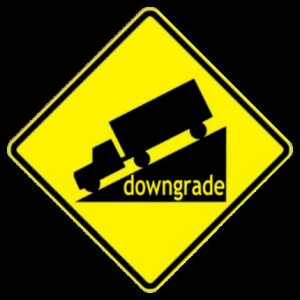
From Bloomie:
Canadian banks are underperforming global counterparts by the most in a year as record consumer debt and a housing market that’s vulnerable to a correction weakens their earnings prospects and risks a credit downgrade.
Standard & Poor’s cut its outlook to negative from stable on seven Canadian banks July 27, including Toronto-based Royal Bank of Canada and Toronto-Dominion Bank (TD), citing a prolonged increase in housing prices and consumer indebtedness. The debt of Canadian financial companies is the second-worst performer this month after Japan among 35 global peers, according to Bank of America Merrill Lynch data.
“Were house prices to drop materially and over a prolonged period of time, then households would start to de-lever,” Peter Routledge, an analyst in Toronto at National Bank Financial, said in an e-mail yesterday. “We’re not there yet, but that issue is the elephant in the room.”
Yields on the debt of Canadian financial companies ended last week at 158 basis points over federal benchmarks, compared with 257 basis points for global financial firms, according to Bank of America data. The differential is the tightest on a weekly closing basis since July 2011, the data show, meaning Canadian financials are underperforming global counterparts.
“We’re highlighting the potential risks gathering in intensity,” Tom Connell, lead author of the S&P report, said in an interview yesterday from Toronto. “The Canadian economy is exposed to the global economy. Consumer leverage and housing- price dynamics are really closely linked to prospects for consumer income growth.”
Sounds familiar.

